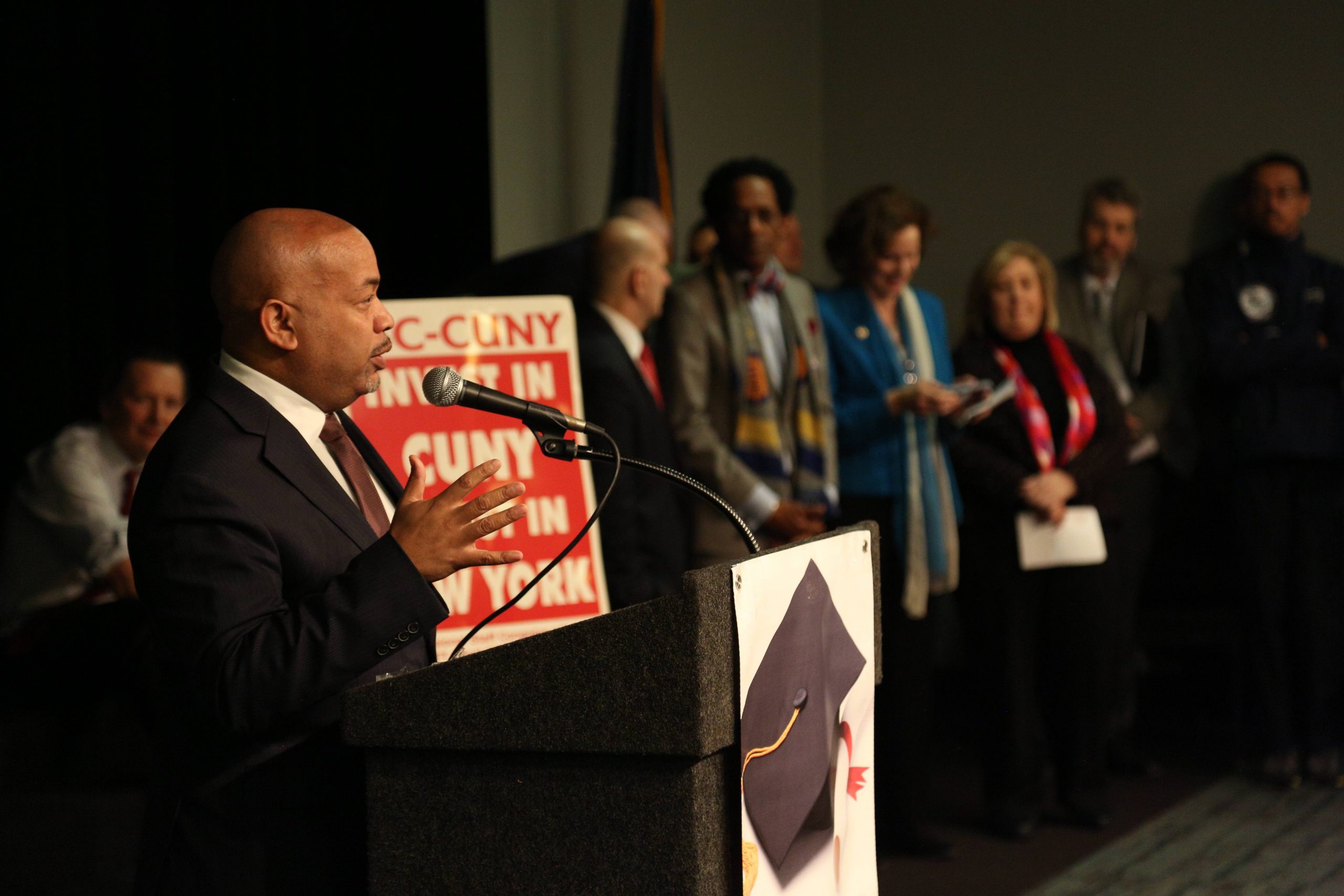
Last Thursday, students, staff and faculty travelled from all over New York state to show their elected officials in Albany just how burdensome another tuition hike would be.
City Tech senior Jessica Woodberry’s experience was a prime example of CUNY students who pay out of pocket. “With the hike in tuition I can’t afford to go to school anymore I have had to drop some classes to make sure I can pay what the loan doesn’t cover,” Woodberry said while holding back tears in a meeting with Assembly member Zellnor Myrie’s legislative assistant. “I’m a single parent and there are days where I can’t eat or feed my child because I have to pay tuition or textbooks or transportation.” Woodberry’s story wasn’t unique among more than 600 students who converged on the State building to win more funding CUNY and SUNY. Stories ranged from students needing to jump turnstiles to get to class to having to choose between books over food.
In this year’s executive budget request, Governor Andrew Cuomo announced yearly tuition hikes of $200 for the next five years and a flat operating budget despite the increase in enrollment and ailing infrastructure. In the past years, tuition has gone up by $1600 which is about 40% of the current cost of tuition per semester
CUNY and SUNY need $86 million dollars from the state budget to stop a tuition hike according to the New York Public Interest Research Group. That’s .0004% of the $178 billion New York State budget.
Tuition wasn’t the only issue on the group’s docket. The coalition of six different student governments and unions made demands which included an increase state investment, a freeze in tuition hikes, eliminating the TAP Gap, expanding Education Opportunity Programs (EOP), and a reform on state financial aid.

Team leaders prepared their groups encouraging students to tell their personal stories to move the politicians. University Student Senate (USS) President Timothy Hunter offered up his own story as an example to bring to their meetings. “My mom was a graduate of Medgar Evers College. When she was getting her undergraduate degree in 1993. She was having her classes not in classrooms but in trailers,” said Hunter. “They called them portables. They said they’d be temporary.” Hunter took his specialized high school prep in those same trailers and classes are still being held in them today. Students and teachers were in 45 different offices throughout the day telling stories just like these.
It was the end of the week’s legislative session and by the time the students had made it to elected officials’ offices many elected officials were already headed back to their respective districts. Some lobbying groups were received by legislative staff and not the elected officials themselves. “I came up to see her, but she was back in our district,” said Esperanza Rosenbaum, a recent graduate of City College.
Rosenbaum had woken up at 4 A.M. to meet Senate Majority leader Andrea Stewart Cousins with the hope of getting a pledge to support the demands in the executive budget. The legislative assistant couldn’t make any pledges on behalf of Senate Majority leader Cousins. The budget will be final on April 1, 2020 so there’s still time to make changes. CUNY and SUNY students won’t know how effective their advocacy was until that day.
Other legislators have made pledges publically, however. “We’re going to eliminate that TAP gap, we are going to reject the additional tuition increases,” said Assembly Majority leader Carl Heastie to the diverse crowd before their lobbying appointments. “When the population of CUNY and SUNY didn’t look like this, it was free.”

The struggle of students goes beyond just tuition. One student told her story about how she couldn’t find any resources for her mental health. “When I was a freshman in college I was sexually assaulted. I heard about counseling in the sociology department,” said Judley Baltazard, a junior at City College. “The counseling was closed. I didn’t get counseling and never got counseling. There are only two counselors in my whole school.”
The ratio of students to mental health counselors at CUNY is 1:2700. The International Accreditation of Counseling Services recommends a ratio of which requires about double the counselors. State Senator Andrew Gounardes currently has a bill which would mandate the university to maintain that IASC ratio.
The teachers invoked some of the students that couldn’t be in these meetings to advocate for themselves. “One of my students, Gina didn’t show up for the first three classes,” said an English professor from Medgar Evers. “She was in an opportunity program and they were late getting her metrocard and she couldn’t afford the $2.75 to get to class. She turned out to be an A student by the end of the class.”
Student leaders made it clear that this won’t be the last chance for students to advocate for higher education. “Right now, as we sit here listening to elected officials promise us this and promise us that we need to make sure that today is not just the end of the movement, not the peak of the movement but the start of the movement,” said USS President Hunter.
USS is planning a CUNY-wide march across the Brooklyn Bridge on March 15. On Tuesday March 3, students can testify funding for CUNY from the city at the New York City Council Committee on Higher Education.

